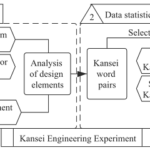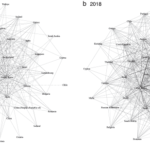Innovation is a multifaceted concept, often studied in the fields of economics and management. Traditionally, it has been examined from the perspective of product development and economic growth. However, it is essential to recognize that the acceptance of innovation is not solely an economic process; it is profoundly influenced by social and behavioral factors.
Researcher Dmitry M. Kochetkov, from the Centre for Science and Technology Studies at Leiden University and the Peoples’ Friendship University of Russia (RUDN University), delves into the multifaceted nature of innovation and presents a comprehensive typology based on the work of Sundbo (1998), with updates and additions that consider recent developments in the field.
Kochetkov has developed a new typology of theoretical approaches to studying innovations, expanding the theoretical knowledge in this field. Based on the new typology, the scientist has identified the most promising areas for future innovation studies.
The Multidimensional Nature of Innovation
Innovation extends beyond the simple development of new products or technologies. It is a transformation that affects various facets of our society, including social, economic, behavioral, and institutional dimensions.
Innovation is the subject of interdisciplinary research in behavioral economics, management, sociology, and psychology. The diversity of approaches and concepts has led to the need for a classification.
The recognition of this multifaceted character has led to the need for a typology that can categorize and understand these diverse aspects of innovation.
Sundbo’s Tripartite Classification
The typology proposed by Jon Sundbo in 1998 has been the common system, identifying three different aspects of innovation:
- Entrepreneurial Innovation: This category emphasizes the role of entrepreneurship in driving innovation. It focuses on the creation of new business ventures, market strategies, and disruptive changes in the business landscape.
- Technological and Social Aspects: This category highlights the intertwined relationship between technology and society. It recognizes that innovation often involves the adoption of new technologies alongside changes in social behaviors, norms, and social expectations.
- Strategic Aspects: This category focuses on the strategic nature of innovation, where businesses develop and adapt their strategies to maintain competitiveness. It also encompasses the organizational and managerial changes that come with strategic innovation.
However, since then, many new concepts have emerged that can no longer be unambiguously classified into one of the three types. The new study updates and expands the diagram to include new theoretical directions.
“In this conceptual framework, many theoretical directions are found at the intersection of different aspects. Many of these directions emerged after 1998. So, we created a development of this scheme, adding concepts that appeared already in the 21st century,” said Dmitry Kochetkov, Ph.D., Associate Professor at the Department of Probability Theory and Cybersecurity at RUDN University.
Classic System: Three Directions
In the classic system, there are three theoretical directions. The first type of theories considers innovation inextricably connected to entrepreneurship. This understanding of the innovation process dates back to the “father of innovation theory,” Joseph Schumpeter. The second type is based on the technological and economic aspects of innovation. The third sees innovation as a social process and addresses strategic aspects.
The economist systematized new concepts and identified those that do not fit in the classic typology, existing at the intersection of different perspectives. These include the “spiral models,” the “entrepreneurial university,” and others. He complemented the classic model, added a second level of hierarchy to the diagram, and highlighted the intersections of various aspects.
Expanding the Typology
In the years since Sundbo’s initial classification, the innovation landscape has evolved significantly. Recent literature has paved the way for an expanded typology that better captures the nuances of innovation in the modern era.
The result is a new typology of two levels of theoretical approaches for the study of innovation. In the entrepreneurial aspect, the author emphasized the concept of entrepreneurial universities, which have become key players in the creation of a knowledge-based economy. At the intersection of various aspects (entrepreneurial, technological, economic, and strategic), there are triple, quadruple, and quintuple helix models, describing the interactions between universities, businesses, and government in the social and natural environment.
In this regard, Kochetkov proposes to include:
- Open Innovation: Open innovation challenges the traditional closed model by emphasizing collaboration with external partners, customers, and even competitors. It explores the sharing of ideas and resources to foster innovation.
- Agile Innovation: The agile approach emphasizes adaptability and rapid response to changes in the market or technology landscape. It involves iterative processes and flexible project management to stay ahead in dynamic environments.
- Helix Models: The helix model signifies the convergence of academia, industry, and government in driving innovation. It recognizes the importance of collaboration across these sectors and their interaction in fostering innovation.

A Novel Typology for a Complex World
Building upon Sundbo’s foundational work and incorporating recent developments, this study proposes a novel typology that accounts for the diverse aspects of innovation in the modern world.
Kochetkov offers a framework that enables a more comprehensive understanding of how innovation affects not only product development but also society, behavior, and institutions.
After describing and systematizing these concepts, the researcher has also identified the most promising areas for future investigations. The first promising direction is the role of innovation and entrepreneurship in the development of public institutions and the improvement of living standards to achieve sustainable development goals. The second is to examine the national economic, political, and social context and its impact on innovation.
New Avenues for Innovation Studies
The proposed typology not only expands our theoretical knowledge but also points to promising areas for future innovation studies. Researchers can explore the dynamics between these dimensions and the potential synergies that emerge from their interaction.
“The digital transformation of economies and societies has significantly changed the innovation landscape. Research on innovation goes far beyond economic, technological, and management studies. Another issue is that most, if not all, innovation theories and concepts were formulated in developed countries. Therefore, studies of the national context and its impact on innovation and entrepreneurship, especially in developing countries, are an important part of the academic and policy discourse,” Kochetkov stated.
Conclusion
Innovation is not a one-dimensional concept but a complex, multifaceted phenomenon that touches every aspect of our lives. Understanding innovation requires a comprehensive typology that considers the economic, social, behavioral, and institutional dimensions.
Sundbo’s original classification has served as a valuable foundation, but recent developments in the field demand a more encompassing framework.
The typology proposed by Kochetkov broadens our understanding of innovation and offers new pathways for future research, ensuring that we continue to navigate the ever-evolving landscape of innovation.
Contact
Dmitry M. Kochetkov
Centre for Science and Technology Studies, Leiden University, Leiden, the Netherlands
Peoples’ Friendship University of Russia (RUDN University), Moscow, Russia
Email: d.kochetkov@cwts.leidenuniv.nl
Reference (Open Access)
Dmitry M. Kochetkov. 2023. Innovation: A state-of-the-art review and typology, International Journal of Innovation Studies, Volume 7, Issue 4, 2023, Pages 263-272,
ISSN 2096-2487, https://doi.org/10.1016/j.ijis.2023.05.004.





